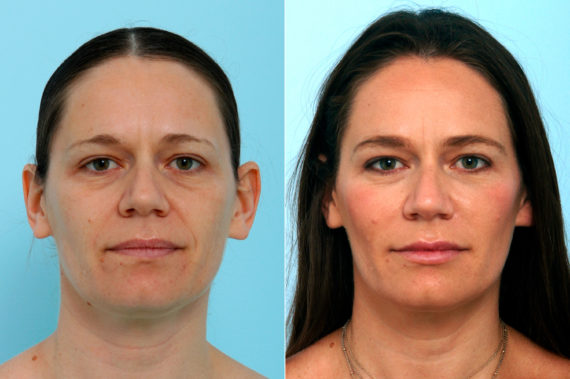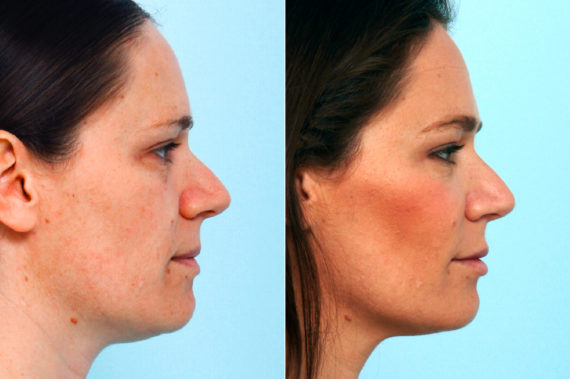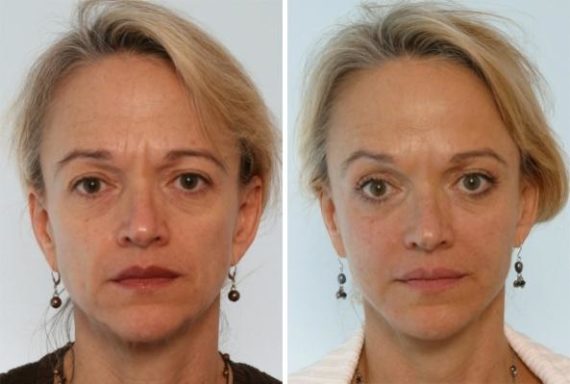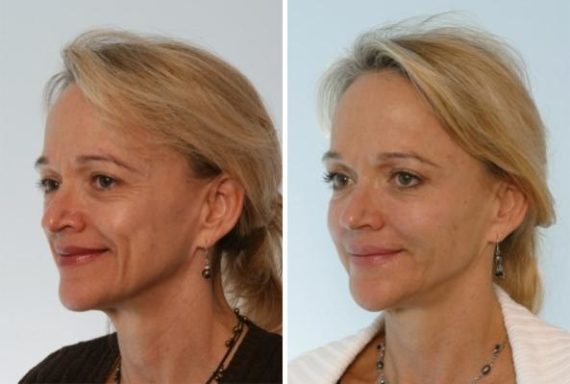
Old age is a beautiful thing in many ways. It comes with a lot of fulfillment and a bank of wonderful memories. It also comes with a certain calmness, of knowing that one has run their race. At a certain age, most people don’t even think about wrinkles and saggy skin.
However, these changes often seem to occur a bit too early. You develop wrinkles too quickly for comfort or notice that you’ve lost volume in different areas of your face. Or, you notice that your lips are not as full and beautiful as you might want.
Thanks to the many innovations taking place in the non-surgical cosmetic medicine industry, injectable dermal fillers are one of the best solutions on the market to address the problems of early signs of aging. With dermal fillers, lost volume can be replaced, age-related wrinkles can be smoothed out, depressed scars can be concealed and even facial contouring can be achieved.
What are Dermal Fillers and What Are They Made Of?
Dermal filler injections, also known as facial fillers or soft tissue fillers, are versatile products used to address various signs of aging, including wrinkles and volume loss. These filler products are carefully injected into specific facial areas by a trained medical professional to enhance facial contours and restore youthful vitality. Utilizing proper injection techniques, such as the linear threading technique or serial puncture, ensures precise placement of the filler substance within the correct planes of the facial anatomy, minimizing the risk of complications such as vascular occlusion or skin necrosis.
Hyaluronic acid fillers, among the most widely used dermal filler products, effectively target facial wrinkles and marionette lines while providing natural-looking results. Additionally, tear trough fillers and lip fillers address concerns in delicate areas like the periorbital region and lips, respectively, offering temporary enhancement with minimal downtime. For deeper lines or volume restoration, permanent fillers like poly-L-lactic acid may be preferred, utilizing techniques such as the sandwich technique to achieve optimal outcomes. Understanding the wide range of filler materials and injection techniques available allows patients to select the correct filler for their specific needs, ensuring safe and effective cosmetic treatments tailored to individual preferences.
Techniques for Dermal Filler Injections
Dermal filler treatments combine art and science in their injection techniques. These techniques are often used in combination for a particular treatment area.
Tunneling technique
A favored approach among aesthetic specialists, the tunneling technique offers a precise and effective method for administering injectable fillers. By inserting the needle at a controlled angle along the path of wrinkles or facial features, this technique allows for targeted treatment of both superficial wrinkles and deeper lines. As the filler is injected during needle withdrawal, it ensures even distribution and natural-looking results.
This method is particularly suitable for addressing areas with diffuse volume loss and delicate facial anatomy, such as the periorbital region and tear troughs. By following the natural contours of the face, the tunneling technique minimizes the risk of vascular occlusion and optimizes outcomes for patients seeking to rejuvenate their appearance and diminish the signs of aging.
Stretching technique
The stretching technique in facial filler injections offers a strategic approach to address various concerns, including deep lines and superficial skin wrinkles. By gently stretching the skin around the targeted area, such as frown lines or the periorbital region, the injector can effectively highlight the specific wrinkle or facial feature for precise treatment. This method not only facilitates the insertion of the needle at accurate angles but also helps in minimizing discomfort during the procedure.
Moreover, the stretching technique enables the injector to navigate delicate facial structures and vascular structures with enhanced precision, reducing the risk of vascular occlusion. Whether utilizing linear threading or cross-hatching, the preferred injection technique can be executed with confidence, ensuring optimal distribution and placement of the filler substance. Incorporating this method into facial filler procedures, including tear-through fillers or lip filler injections, allows for meticulous attention to detail and tailored treatment care, ultimately rejuvenating the facial appearance and enhancing patient satisfaction.
The point technique
The point technique, also known as serial or multi-puncture, revolutionizes facial filler injections by strategically placing small droplets of filler into deeper layers of the skin. This meticulous approach involves injecting filler droplets spaced 2-4 mm apart, allowing them to coalesce and effectively fill wrinkles and contour irregularities. By targeting deeper tissues of the face, this technique not only addresses isolated wrinkles but also replenishes volume and hydration, resulting in a rejuvenated appearance.
Ideal for treating large empty areas and deep lines, the point technique offers precise control over filler placement, ensuring natural-looking results. Moreover, this method minimizes the risk of vascular occlusion by meticulously avoiding vascular structures such as labial arteries. Understanding facial anatomy and employing preferred injection techniques, such as linear threading or cross-hatching, further enhances the safety and efficacy of facial filler injections. Whether addressing forehead wrinkles, periorbital concerns, or tear troughs, the point technique offers a customizable approach to facial rejuvenation, utilizing a variety of fillers including permanent options like poly-l-lactic acid or calcium hydroxylapatite to achieve optimal outcomes with proper treatment care.
The dual-plane technique
The dual-plane technique, known for its versatility and natural-looking results, addresses both superficial wrinkles and deeper volume deficiencies within the facial anatomy. This advanced method involves injecting two layers of the skin, typically the dermis and subdermal areas, to achieve comprehensive rejuvenation across various facial features. By utilizing different types of injectable fillers tailored to the specific needs of the patient, practitioners can effectively target both fine lines and deeper folds, ensuring a harmonious outcome.
In this technique, a delicate filler is strategically applied to superficial skin wrinkles, while a thicker filler substance is introduced to address deeper lines and volume loss in the subdermal plane. By employing this preferred injection technique, practitioners can navigate facial structures with precision, minimizing the risk of vascular occlusion and optimizing treatment care. The dual-plane approach not only enhances facial contours but also ensures natural-looking results that seamlessly integrate with the dynamic movements of facial muscles, ultimately revitalizing the appearance while maintaining facial harmony.
Micro-papular technique
The micro-papular technique offers a precise approach to facial filler injections, targeting superficial skin wrinkles and enhancing facial features. By delicately injecting filler droplets into the superficial part of the dermis, typically at a depth of 1 to 3 mm, this technique addresses fine lines and wrinkles, such as forehead wrinkles and frown lines, with precision and accuracy. It is particularly beneficial for treating the periorbital region and tear troughs, where delicate fillers and preferred injection techniques are essential to achieve natural-looking results while minimizing the risk of vascular occlusion.
Learn More About Dermal Fillers
It’s important to choose a provider who understands all the options for dermal filler techniques. While the procedure itself is simple, it is difficult to master. The aesthetic experts at Mirror Mirror Beauty Boutique in Houston offer patients great results and peace of mind. Call (281) 559-6947 today to schedule a consultation and learn more about your dermal filler options.




